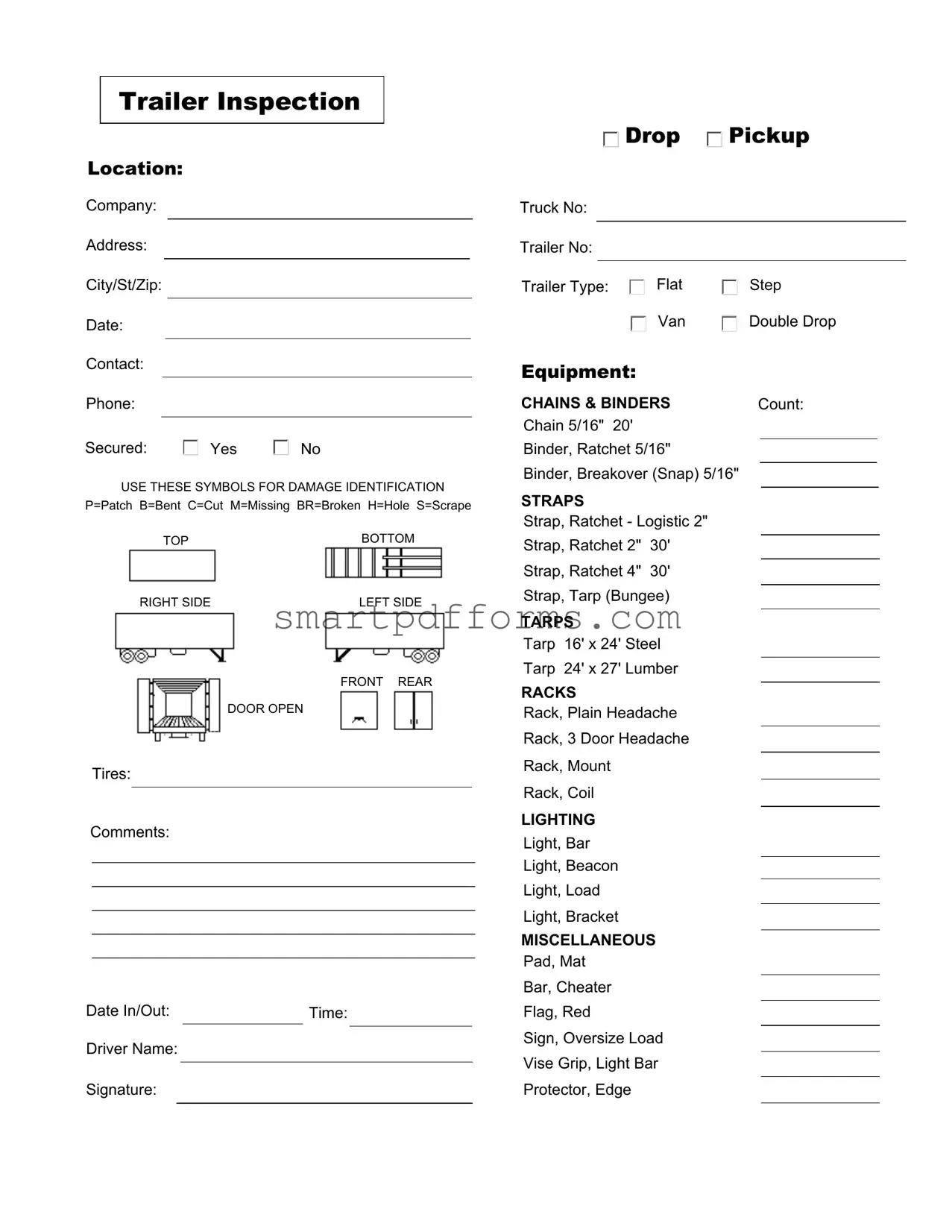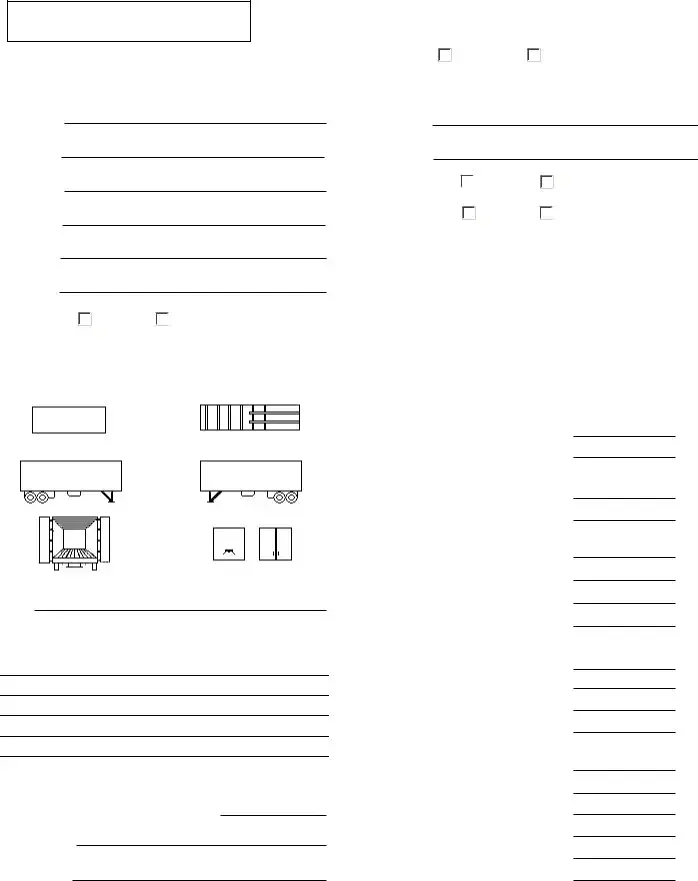Blank Trailer Inspection PDF Template
The Trailer Inspection form is a crucial document designed to ensure the thorough assessment of a trailer's condition before its use for either dropping off or picking up loads. It meticulously records details such as the trailer's location, company information, contact details, truck and trailer numbers, and type of equipment, along with a specific section for marking any damage using predefined symbols. If ensuring the safety and compliance of your trailer is a priority, consider filling out the form by clicking the button below.
Make This Document Now

